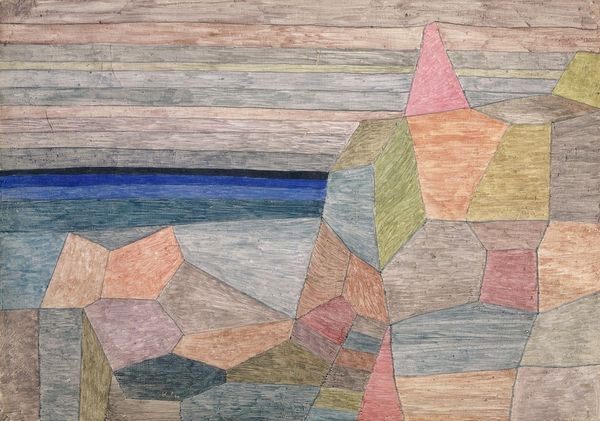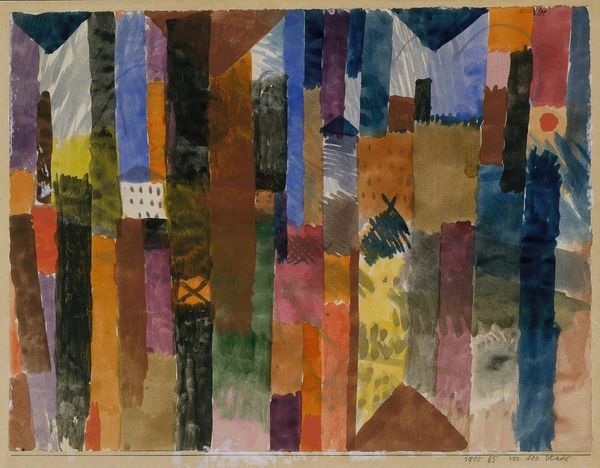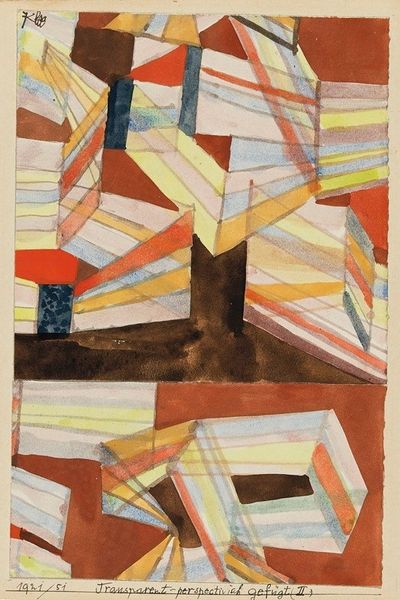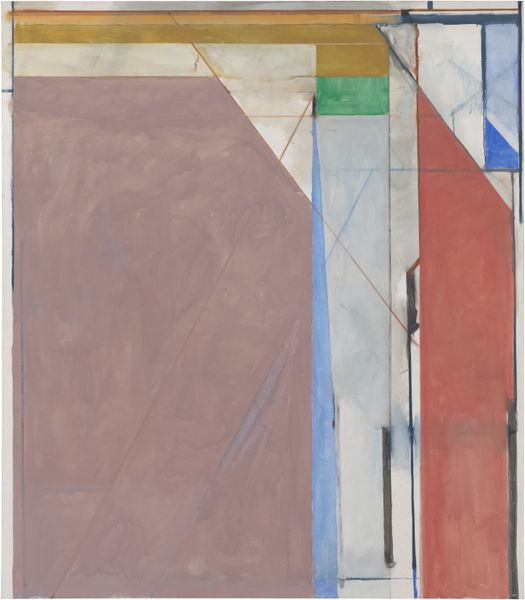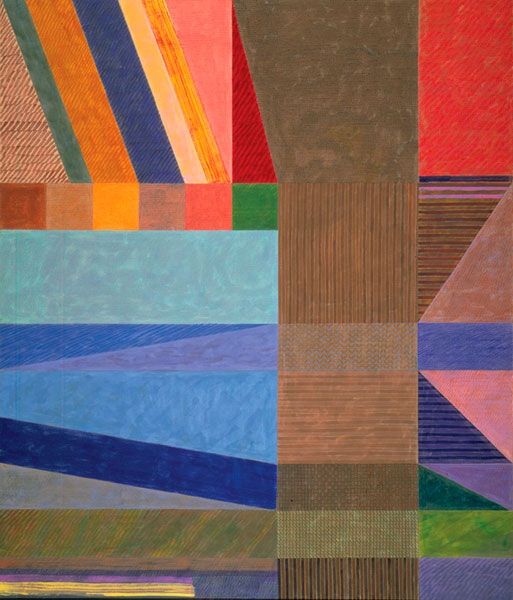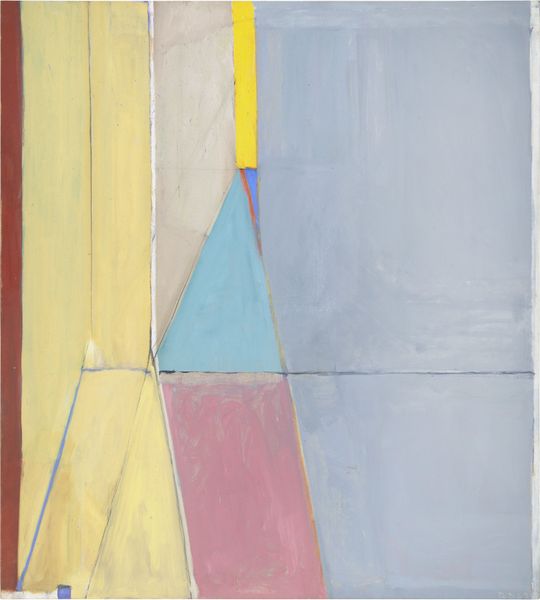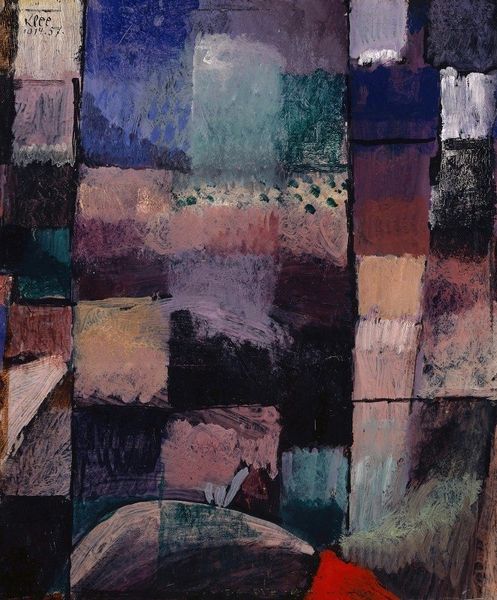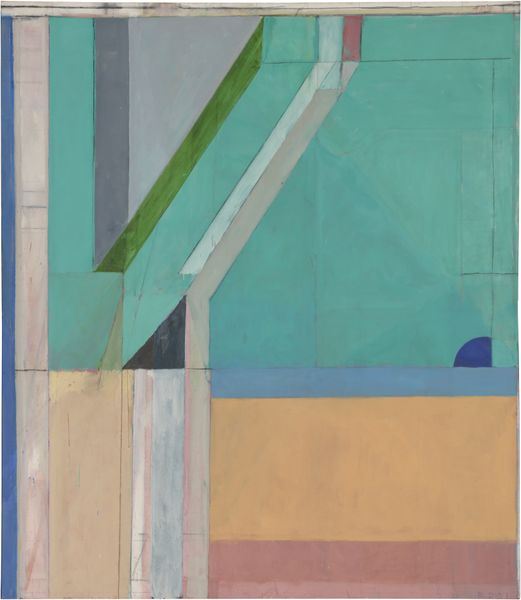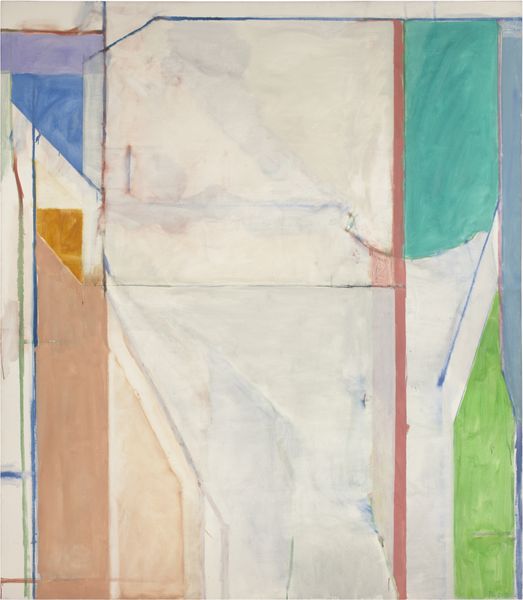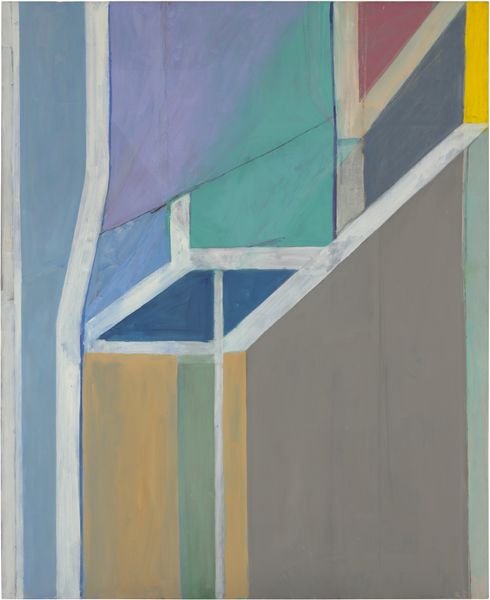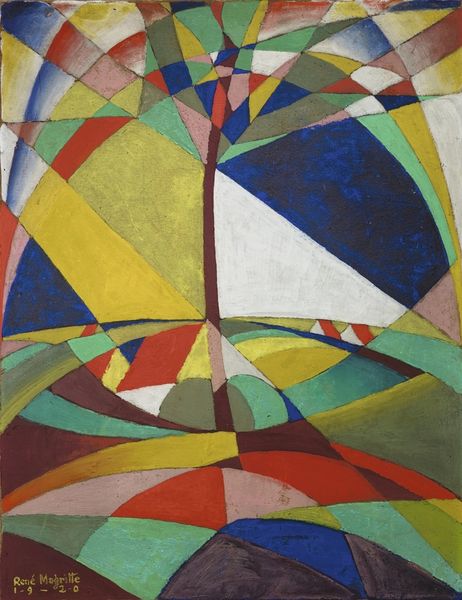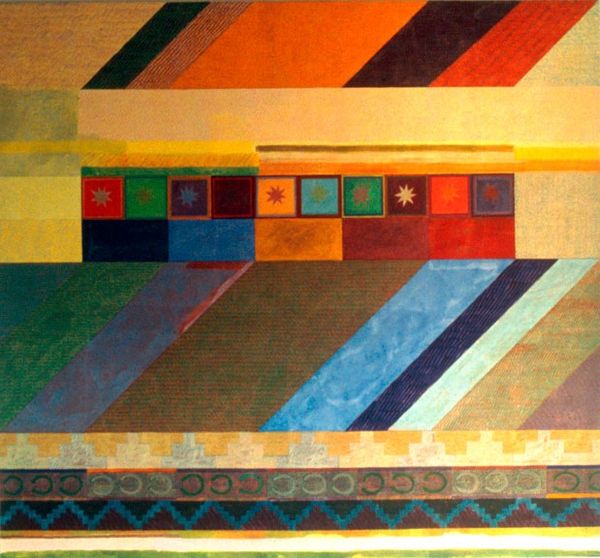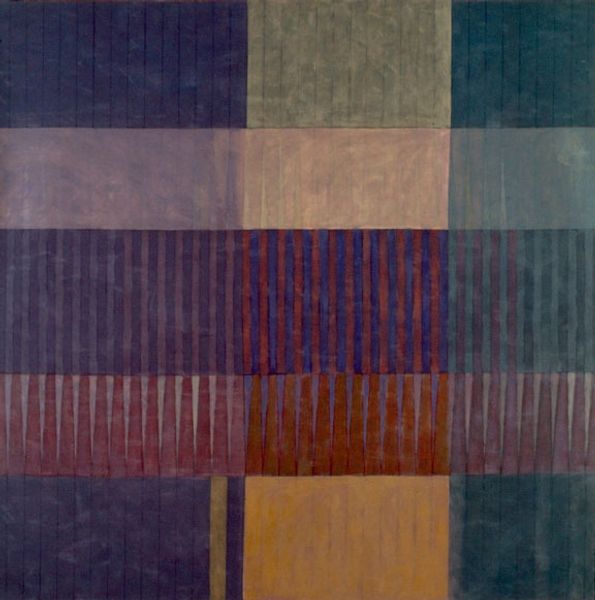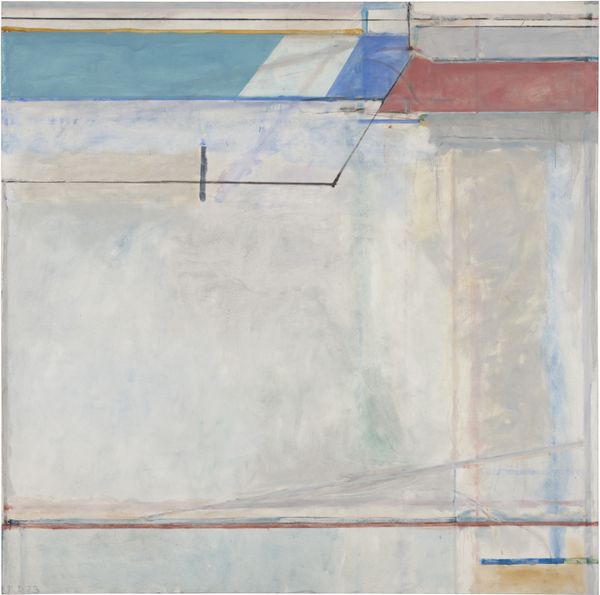
Dimensions: 48.5 x 34.5 cm
Copyright: Public Domain
Curator: Soothing. That's the first word that pops into my head. It's like looking at a carefully organized garden after a gentle rain. Editor: That's a beautiful image! You are gazing at Paul Klee's "View into the Fertile Country" from 1932, which resides here at the Städel Museum. Klee rendered this using watercolor, oil pastel, and ink on paper. It presents a fascinating convergence of abstraction and landscape. Curator: The lines draw me in—those soft, horizontal strata… and the geometric shapes. It’s both planned and somehow dreamlike. Did he have something specific in mind? Editor: It's believed Klee's landscapes from this period reflect his yearning for an escape, especially given the rise of fascism in Europe. We might even interpret these geometric forms not just as abstract, but as symbolizing social structures. Notice the varying densities within the artwork's color fields and structural blocks and how they affect our reading of its subjectivities. Curator: Interesting. I was going to say they feel like architectural ruins almost. The slightly faded palette emphasizes that feeling for me too. Like, nature reclaiming what humans constructed, something like that? It is a kind of emotional space I get while visiting sites. Editor: Absolutely, this intersectional reading emphasizes ideas around land, ownership, memory and erasure. It might be productive to analyze its aesthetic program in parallel with Klee's other works to see what broader meanings surface within his art practices. The individual rectangles of color reminds one of building blocks in the context of societal building, right? Curator: Totally. Though I do love that Klee uses, ostensibly, the rigid structure of blocks to generate that feeling of, as I mentioned, an oneiric state or space. Editor: Indeed, such use demonstrates the tension between our desires for control and those innate tendencies towards release. As we conclude, it becomes even more evident that this painting offers a landscape which reflects Klee's deeply personal journey. Curator: A landscape that makes me ponder mine as well, the ways in which structure and looseness interact, informing the view and how I move across that space. Thanks!
Comments
stadelmuseum about 2 years ago
⋮
“I painted a landscape resembling the view from the wild mountains of the Valley of the Kings into the cultivated land,” Klee wrote in a letter to his wife in 1932, after he had finished the painting. It had been three years since he visited Egypt, but his journey had left lasting impressions. Ancient Egypt’s lifeline, the Nile River, flows in a wavy line in the foreground. Buildings are represented by geometric shapes, behind which rows of multicoloured horizontal stripes create an illusion of fields along the banks of the Nile. Egypt’s green and fertile land extends all the way to the horizon.
Join the conversation
Join millions of artists and users on Artera today and experience the ultimate creative platform.
